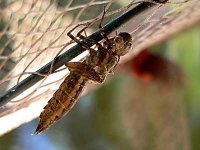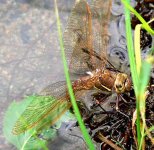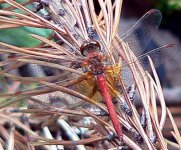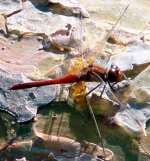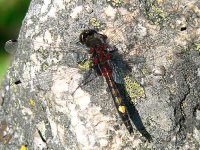Macswede
Macswede
Here are three pictures from my holiday in Finnish Karelia during the second 2 weeks in August.
One is of an empty pupal case (probably not the correct terminology). I have no idea if it's even possible to identify those. I think it's quite a good picture though - unlike the other 2.
The second is of a large egg-laying (I think) female. It was hard to focus on her through the grass. She kept moving from place to place and i didn't want to disturb her.
The third is of a smaller red dragonfly. It was predominately red but the red spots on the wings may be a colour abberation. I'm not sure.
Hope somebody might find it challenging to identify them!
Graham
One is of an empty pupal case (probably not the correct terminology). I have no idea if it's even possible to identify those. I think it's quite a good picture though - unlike the other 2.
The second is of a large egg-laying (I think) female. It was hard to focus on her through the grass. She kept moving from place to place and i didn't want to disturb her.
The third is of a smaller red dragonfly. It was predominately red but the red spots on the wings may be a colour abberation. I'm not sure.
Hope somebody might find it challenging to identify them!
Graham




